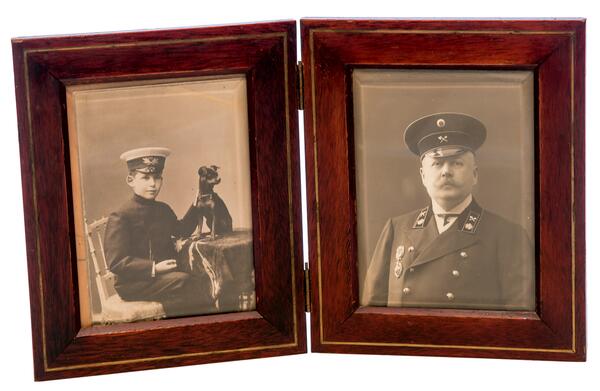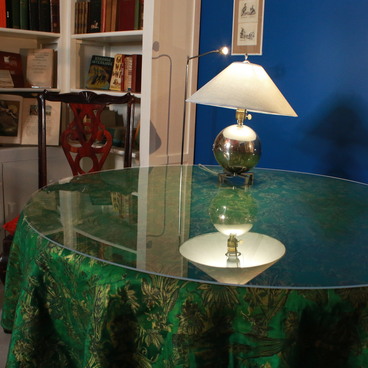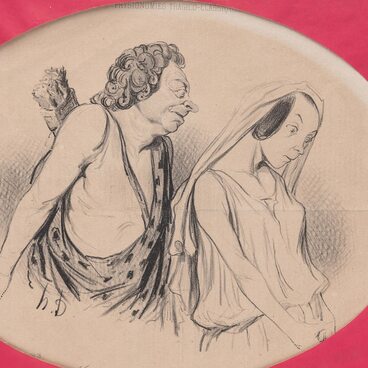In 1911, MikhaIl Eisenstein gave his son a photo with an inscription that read: ‘To my dear son, in memory of his 13th birthday (January 10, 1911) from his loving father.’ The same photo was tucked into a double mahogany frame. On one side was the father in the uniform of a railroad track engineer. On the other side was the son in the uniform of the RIga Realschule student.
Moisey Aisenstein (later he changed the name to Eisenstein, in German spelling) was born into a Jewish merchant family in BIla Tserkva (Kiev Governorate) on September 17, 1867. He graduated from the Kiev Realschule. At that time, Russia had the Pale of Settlement Law that prohibited Jews from living outside its borders, so access to the universities in the capital was closed. Like his four brothers, Moisey converted to Orthodoxy and Christianized his name to Mikhail to be able to pursue his studies. He graduated from the St. Petersburg Institute of Civil Engineers and, in 1893, moved to Riga, where he was employed in the railroad industry. In 1897, he married Yulia Konetskaya, a daughter of a Russian merchant. Sergei Eisenstein was born in 1898. By 1915, his father was promoted to the rank of Active State Councillor, a civil rank equal to that of Major-General in the Army, and in 1916, he was granted the right of hereditary nobility.
Mikhail Eisenstein devoted his spare time to architecture and designed a few dozen Art Nouveau buildings in Riga. His major inspirations were theater and opera, his travels around Europe, and his knowledge of ancient history: in 1902, he graduated from the St. Petersburg Archaeological Institute. Today, his buildings — in particular, a number of buildings on Albert Street — are Riga’s landmarks.
Moisey Aisenstein (later he changed the name to Eisenstein, in German spelling) was born into a Jewish merchant family in BIla Tserkva (Kiev Governorate) on September 17, 1867. He graduated from the Kiev Realschule. At that time, Russia had the Pale of Settlement Law that prohibited Jews from living outside its borders, so access to the universities in the capital was closed. Like his four brothers, Moisey converted to Orthodoxy and Christianized his name to Mikhail to be able to pursue his studies. He graduated from the St. Petersburg Institute of Civil Engineers and, in 1893, moved to Riga, where he was employed in the railroad industry. In 1897, he married Yulia Konetskaya, a daughter of a Russian merchant. Sergei Eisenstein was born in 1898. By 1915, his father was promoted to the rank of Active State Councillor, a civil rank equal to that of Major-General in the Army, and in 1916, he was granted the right of hereditary nobility.
Mikhail Eisenstein devoted his spare time to architecture and designed a few dozen Art Nouveau buildings in Riga. His major inspirations were theater and opera, his travels around Europe, and his knowledge of ancient history: in 1902, he graduated from the St. Petersburg Archaeological Institute. Today, his buildings — in particular, a number of buildings on Albert Street — are Riga’s landmarks.
In 1909, Eisenstein’s marriage broke up: Yulia Konetskaya went to her native St. Petersburg, and in 1912, the couple got officially divorced. The future director was in his father’s custody. MikhaIl Eisenstein provided his son with an excellent education (in 1915, Sergey enrolled in the Institute of Civil Engineers in PetrogrAd) and hoped that he would become an architect. Yet, in 1920, Sergei Eisenstein made a tough decision: he quit his engineering studies to pursue his long-cherished dream of becoming professionally involved with theater. Twenty-five years later, he made a note about a sleepless night in Minsk, when, after painful reflections, he abandoned his father’s path. In his memoir, Sergei Eisenstein wrote about his father’s uneasy temper and his “family tyranny” and ridiculed his vanity. The director put a photo portrait of Mikhail Eisenstein and an early photo with his parents on the window in front of his desk.



